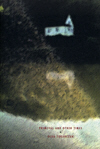Primeval and Other Times
For me, it’s rare for an author of fiction to accomplish “soul-touch,” but Olga Tokarczuk does just that with her captivating spiritual imagery and layers of characters that touch the heart-depths of readers’ imaginations. Primeval and Other Times is an award winning novel (first published in the 1990s) that takes place in a mystical Polish village guarded by four archangels through the 20th century. One particular passage woven within her mythical tale that stands out is almost a summarized subtext of Tokarczuk’s mastered, descriptive sensory writing style:
For me, it’s rare for an author of fiction to accomplish “soul-touch,” but Olga Tokarczuk does just that with her captivating spiritual imagery and layers of characters that touch the heart-depths of readers’ imaginations. Primeval and Other Times is an award winning novel (first published in the 1990s) that takes place in a mystical Polish village guarded by four archangels through the 20th century. One particular passage woven within her mythical tale that stands out is almost a summarized subtext of Tokarczuk’s mastered, descriptive sensory writing style:
For animals, God is a painter. He spreads the world before them in the form of panoramic views. The extent of these crude pictures lies in smells, touches, flavours, and sounds, which contain no meaning. Animals do not need meaning. People sometimes feel something similar when they dream. But when they are awake, people need meaning, because they are prisoners of time. (from “The Time Dolly”)
Tokarczuk is a painter of words and dreams who writes with meaning. She challenges readers to question/discover the layers of God, story, and characters’ souls through symbolism, mentions of authentic Polish Easter customs, and vignettes featuring the complex labyrinth journey game of life choices divided into eight worlds/spheres. The latter might be considered an opposite, modernized structure that compliments Dante’s Inferno and is something I hope Tokarczuk will consider expanding in the future. Perhaps in a sequel or trilogy.
She also cites the profound significance of foursomes in everyday life, from seasons to an interesting examination of fours in the Bible from the prophets in the Old Testament to the four horseman of the Apocalypse. She includes listings of random foursome elements that literally floss your brain in wonder from the four elements according to Aristotle to the four bases that construct DNA. It’s amazing how reading about a microcosm can expand your own universe, thanks to Antonia Lloyd-Jones’s excellent job of translation. So in line with foursomes and “4” being the best, I give this novel 4 stars.





